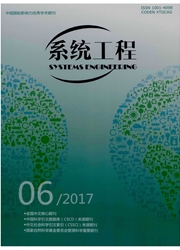

 中文摘要:
中文摘要:
基于技术相似度和研发两面性等理论,考察研发直接影响、溢出效应和吸收能力三种路径下,不同分位上和不同区制中研发对高技术产业产出增长的差异化驱动效应。结论认为,随着分位点的增大,在研发要素边际收益递减规律作用下,研发存量对高技术产业产出呈现先增强后减弱的正向影响。各分位上研发投入均呈现出正外部性,但溢出程度较低。高技术产业中技术引进和消化吸收支出分配的结构失衡不利于引进技术的消化吸收和高技术产业的产出增长。门限面板回归的结果显示。在低区制和中区制中随着研发资源的累积,研发的规模效应开始显现,而在研发存量很高的高区制中,高技术生产、研发活动在中心省份的集聚阻碍了溢出效应的发挥。此外,研发推动的技术进步导致技术差距逐步缩小,技术消化吸收对产出增长的影响开始减弱,并且由正转负。
 英文摘要:
英文摘要:
Based on technology proximity and the two faces of R&D theory, this paper investigates the different driving effects of R&D on high-tech industry output growth under three paths, that is, direct impact of R&D, spillovers and absorptive capacity.The conclusions are that, with the increase of quantiles, the R&D firstly enhance and then weakenes positive influences of R&D stocking on the high-tech outputs under the law of diminishing marginal returns. The R&D investment shows positive externalities, but low level of spillover effects. Additionally, the proportion between technology acquisition and absorption expenditures is imbalanced structurally which is not conducive to digestion and absorption of imported technology and then high-tech industry output growth. Threshold panel regression results show that scale effects of R&D begin to appear with the accumulation of R&D resources in low and middle regimes. However, in high-regime, the concentration of high-tech production and R&D activities in the central provinces hinder R&D spillovers. Moreover, R&D-driven technological progress gradually narrows the technology gap. The impacts of technology digestion and absorption on high-tech output growth begins to weaken, from positive effects to negative ones.
 同期刊论文项目
同期刊论文项目
 同项目期刊论文
同项目期刊论文
 期刊信息
期刊信息
